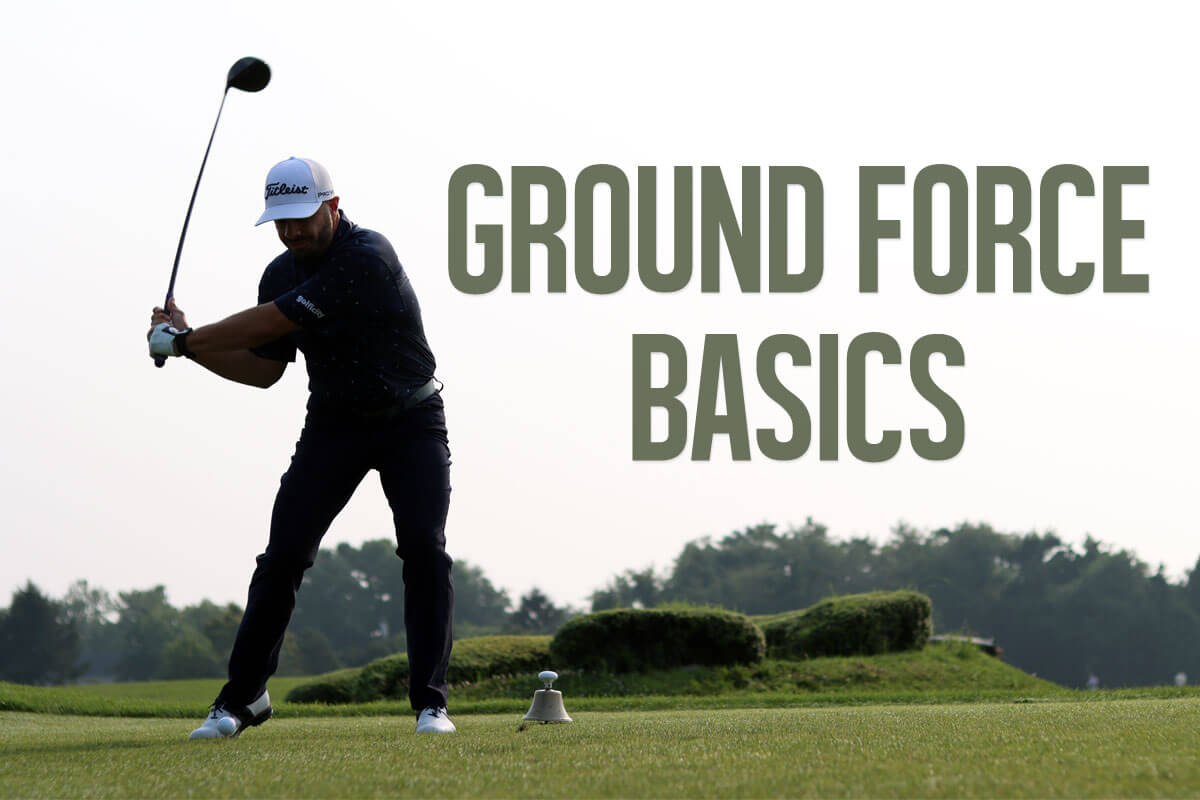Golf Instruction
Understanding the Importance of Ground Force in Your Golf Swing

In golf, you want to tap into every possible source of available power that you can find.
Most golfers think about sources of power as things like their physical strength, the length of their swing, the speed of their turn, and even their equipment.
Those are all important, but that list omits one other vital opportunity – using the ground to generate more speed.
This article is dedicated to leveraging the ground force to get more out of your swing. If you aren’t currently using the ground correctly when making big swings, you are looking at an exciting opportunity to hit the ball harder than ever before.
How the Ground Can Help Your Golf Swing
In this first section, we are going to take a big picture look at the concept of ground force in golf. Later in the article, we’ll provide you with some actionable tips on how you can practice getting more out of the ground while trying to up your swing speed.
The ground can help you generate more speed because you have the opportunity to push off the ground while swinging down into impact. If you ever watch baseball, you have already seen this general concept in action.
What is the first thing most batters do when they step into the box to hit? They dig a little hole with their back foot in order to keep that foot planted and gain some leverage. When the swing begins, that back leg pushes down into the ground and helps the rest of the body rotate into the swing.
Watching a power hitter in baseball swing in slow-motion reveals just how much they rely on their back leg to generate force.
Of course, this example doesn’t apply perfectly to golf. You can’t legally dig your feet into the turf – although you can in a bunker – and the baseball swing and golf swing differ in a number of technical ways.
The bigger point remains, however, and learning how to capture the power the ground is offering is one of the biggest advantages you can gain in this game.
Going Back to Fundamentals
No matter when you started to play golf, it’s likely that you were given one specific piece of advice – bend your knees.
This is advice that is offered commonly across almost every sport, and it is good guidance in golf, as well. Bending your knees before you start your swing is one of the best ways to get into an athletic, balanced stance.
But it’s not good enough to flex your knees just at the start of the swing. You’ll also need to keep those knees flexed throughout the swinging action, which is where so many people go wrong.
It’s all too easy to give up your knee flex at the top of the swing, allowing your legs to straighten in an effort to turn just a little further. Once you lose your knee flex, any opportunity you had to use the ground force to your advantage will have been lost.
Ground Force is Essential Off the Tee
You can use the ground force on basically any full swing shot, but it is most important when swinging a driver.
This is where you have the most to gain by adding swing speed, and it is also where you have some margin for error on the strike – thanks to the size of modern drivers.
So, what does this look like in practical application? Let’s work through a powerful driver swing, step by step:
- Starting with your knees flexed, you’ll make a big backswing while maintaining balanced and staying down in a flexed position with your lower body.
- The downswing starts with an aggressive turn toward the target. The knees are staying flexed at this point as the hips turn open and the club trails below.
- As the downswing develops, the ground force will come into play. This is where your knee flex starts to be used up, as you push off the turf and your legs straighten. This action has the potential to speed up your turn, adding power that can be translated down into the ball. By impact, your legs will be straight, your eyes will still be down on the ball, and the driver will be ripping through the hitting area at maximum velocity.
Reading these three steps makes the driver swing sound pretty simple. It’s not that simple to execute, of course, but you can improve with practice.

Image via Golf.com
For most players, the hardest part of integrating the ground force into the swing is not the move itself, but rather the timing of that move. If you force it, you’ll straighten the legs early and wind up swinging over the top instead. This action is only going to be effective if it is saved until deep into the downswing before you let it rip.
A Simple Ground Force Drill
To work on using the ground force more effectively, you can try this drill at home without so much as a club on hand. Simply take your driver stance – without a driver – and pretend that you are getting ready to hit a shot.
Make a rehearsal backswing with a full turn and rotate your body hard to the left once you have reached the top (if you are a right-handed golfer). As you rotate left, extend your legs, and feel like you are launching yourself through impact.
Without any worries about making good contact, you are free to make an aggressive, exaggerated move during this drill. Feel free to repeat the drill as many times as you would like.
When you return to the driving range for your next practice session, remember the dynamic feeling of leveraging the ground to your advantage. The first few shots might not be pretty as you get used to this new move, but stick with it. With any luck, you’ll start hitting the ball harder and harder, and you won’t be able to wait to show off your newfound power to your playing partners.
-

 News1 day ago
News1 day agoPolice release Scottie Scheffler’s Mugshot
-

 News4 days ago
News4 days agoRory McIlroy Files for Divorce from Erica Stoll
-

 News1 day ago
News1 day agoScottie Scheffler DETAINED by Police Outside of PGA Championship
-

 News1 day ago
News1 day agoHow Scottie Scheffler Can Miss His Tee Time and Still Play the PGA Championship
-

 News1 week ago
News1 week agoLIV Golf Has Tiger Woods and Rory McIlroy’s Relationship on Thin Ice
-

 Equipment1 week ago
Equipment1 week agoTitleist Hops On ‘Mini-Driver’ Hype with CRAZY TSR 2-Wood
-

 Fantasy Golf Predictions5 days ago
Fantasy Golf Predictions5 days agoFantasy Golf Picks, Odds, and Predictions – 2024 PGA Championship
-

 News4 days ago
News4 days agoAdam Scott Drops BOMBSHELL Regarding PGA Tour Board, Rory McIlroy Drama








